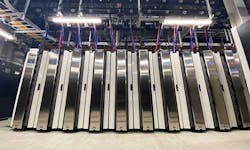Beyond PUE: Challenges in Cooling High Density Data Centers
Last week we launched a special report series on how to sustainably meet high density data center cooling challenges. This week, we’ll take a look at three more IT equipment heat removal challenges.
IT Equipment Heat Removal Challenges, Part 2
Liquid Cooling
Liquid Cooling (LC) has become a bit of a catchall term that encompasses many different technologies and methodologies to transfer heat from the IT equipment to the environment. While this is a highly complex subject, for purposes of this discussion it is simplified into several major categories, described in the table below.
For additional details and references for liquid cooling see: The Green Grid white paper WP#70 Liquid-Cooling-Technology-Update.
An ASHRAE 2021 white paper, Emergence and Expansion of Liquid Cooling in Mainstream Data Centers, focuses on the need for data centers to accommodate and adapt to rising power densities.
It also notes that while higher power processors are the primary thermal management challenge, higher density power levels due to an increase of memory DIMMs in new servers add to the load.
The white paper discusses a CPU roadmap moving from 120-200 watts to 600 watts per processor (CPU, GPU, etc.). This white paper reports these limitations and notes that “A fan power percentage of 10% to 20% is not uncommon for some of the denser air-cooled servers.”
The Green Grid Metric – Power Utilization Effectiveness
The Green Grid (TGG) created the Power Utilization Effectiveness (PUE) metric in 2007. Since then, it has the most globally recognized facility efficiency metric that helped drive down PUE for “traditional” enterprise and colocation MTDC data centers (from approximately 2.0 in 2010 to 1.4 or less in 2020). In 2016 the International Standards Organization (ISO) adopted PUE and other TGG metrics as Key Performance Indicators (listed ISO/IEC 30134 KPI series). When examining PUE as an energy efficiency comparison yardstick, it is one-dimensional. Nonetheless, its underlying simplicity allowed data center operators to easily calculate (or estimate) a facility’s PUE, which drove its widespread adoption.
Moving beyond PUE
For many years, the data center ecosphere quoted and referenced PUE as the primary element of their “green” mantra. As important as PUE was in raising energy awareness, it is only a part of more in-depth conversations about data center sustainability. The current focus is now on decarbonizing and moving to 100% renewable energy sources. While renewable energy is clearly an important factor, many data centers use water as part of the external heat rejection process, regardless of the energy source.
Download the full report, “Sustainably Meeting High Density Cooling Challenges: When, Where, and How,” courtesy of Nautilus Data Technologies to learn more about high density data center cooling. In our next article, we’ll look at three external heat rejection systems. Catch up on the previous article in the series here.


